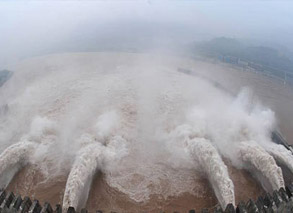Medical care in China over 60 years
2009-09-08 13:26 BJTSpecial Report: 60th Anniversary of PRC |
60 years after the founding of the People's Republic of China, medical care and public health have achieved remarkable progress. Authorities say a basic medical care system benefiting residents in all urban and rural areas has been formed. And the health level of the Chinese people has improved considerably.
Chinese Health Minister Chen Zhu says after decades of efforts, Chinese people's health level is now among the best in developing countries.
The average life expectancy of Chinese people reached 73 by the end of 2008. Before liberation in 1949, the figure was only 35.
Another important indicator of the health quality is the infant mortality rate. The figure has dropped to less than 1.5 percent, compared to more than 20 percent 6 decades ago.
By now, China has eliminated small box, polio and many other serious infectious diseases. The prevention of tuberculosis, AIDS, and Hepatitis B is well underway.
The access to medical services is much easier now. By the end of 2008, China had set up more than 270,000 medical institutions in urban area and more than 600,000 clinics in rural area, covering nearly all of its population.
After several rounds of reforms, a basic medical guarantee system is in place. In urban areas, nearly 320 million people enjoy basic medical insurance. A new cooperative medical care system was launched in the nation's vast rural areas 7 years ago. After promoting the pilot programs for several years, more than 830 million rural residents have been included in the system.
And in April this year, the Chinese government began reforming the country's medicine pricing system. Through listing the nation's essential medicines and designating qualified suppliers, the Chinese government hopes to offer the basic medicine system as a public product for all citizens.

 Mail
Mail Share
Share Print
Print


 Video
Video









 2009 China Central Television. All Rights Reserved
2009 China Central Television. All Rights Reserved